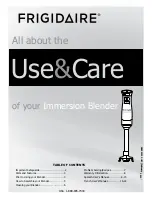
10.Technologies
HDMI-TPS-TX200series–User'sManual
143
Appliedfirmwarepackage:v1.3.2b3 | LDCsoftware:v2.5.7b2
10.1.
EDID Management
10.1.1.
Understanding the EDID
The Extended Display Identification Data (EDID) is the passport of display devices (monitors, TV sets,
projectors). It contains information about the capabilities of the display, such as supported resolutions,
refreshrates(thesearecalledDetailedTimings),thetypeandmanufacturerofthedisplaydevice,etc.
Afterconnectingasourcetoadisplay(DVI,HDMI,DP),thesourcereadsouttheEDIDtodeterminethe
resolutionandrefreshrateoftheimagetobetransmitted.
EDID Communication
Most DVI computer displays have 128-byte long EDID structure. However, DigitalTelevisions and HDMI
capable displays may have another 128 bytes, which is called E-EDID and defined by CEA (Consumer
Electronics Association). This extension contains information about additional Detailed Timings, audio
capabilities, speaker allocation and HDMI capabilities. It is important to know that all HDMI capable devices
must have CEA extension, but not all devices with CEA extension are HDMI capable.
Common Problems Related to EDID
Problem:
“Mysystemconsistsofthefollowing:acomputer,aLightwaredevice,aWUXGA(1920x1200)
LCDmonitor,andanSXGA(1280x1024)projector.Iwouldliketoseethesameimageonthe
monitorandtheprojector.WhatEDIDshouldIchooseontheLightwaredevice?”
Solution:
Ifyouwanttoseetheimageonbothdisplays,youneedtoselecttheresolutionofthesmaller
display(inthiscaseSXGA),otherwisethesmallerdisplaymaynotshowthehigherresolution
image.
Problem:
“IhavechangedtoadifferentEDIDonaninputportoftheLightwaredevicetohaveadifferent
resolutionbutnothinghappens.”
Solution:
SomegraphicscardsandvideosourcesreadouttheEDIDonlyafterpower-upandlatertheydo
notsensethatEDIDhasbeenchanged.Youneedtorestartyoursourcetomakeitreadoutthe
EDIDagain.
10.1.2.
Advanced EDID Management
Each DVI sink (e.g. monitors, projectors, plasma displays, etc...) must support the EDID data structure.
SourceBIOSandoperatingsystemsarelikelytoquerythesinkusingDDC2Bprotocoltodeterminewhat
pixelformatsandinterfacearesupported.DVIstandardusesEDIDdatastructuretoidentifythemonitortype
andcapabilities.MostDVIsources(VGAcards,settopboxes,etc.)willoutputDVIsignalafteracceptingthe
connectedsink’sEDIDinformation.InthecaseofEDIDreadoutfailureormissingEDID,thesourcewillnot
outputDVIvideosignal.
Lightware devices provide the Advanced EDID Managementfunction thathelpssystem integration.The
built-inEDIDRoutercanstoreandemulatefactorypre-programmed-andUserprogrammableEDIDs.The
EDIDoftheattachedmonitorsorprojectorsforeachoutputarestoredinanon-volatilememory.Thisway
theEDIDofamonitorisavailablewhenthemonitorisunpluggedorswitchedoff.
AnyEDIDcanbeemulatedonanyinput.AnemulatedEDIDcanbecopiedfromtheEDIDrouter’smemory
(staticEDIDemulation),orfromthelastattachedmonitor’smemory(dynamicEDIDemulation).Forexample,
theLightwaredevicecanbesetuptoemulateasinkdevice,whichisconnectedtooneoftheoutputs.In
thiscase,theEDIDautomaticallychanges,ifthemonitorisreplacedwithanotherdisplaydevice(aslongas
it has a valid EDID).
EDIDisindependentlyprogrammableforallinputswithoutaffectingeachother.Allinputshavetheirown
EDID circuit.
INFO:
TheuserisnotrequiredtodisconnectthevideocabletochangeanEDIDasopposedtoother
manufacturer’sproducts.EDIDcanbechangedevenifasourceisconnectedtotheinputandpowered
ON.
INFO:
WhenEDIDhasbeenchanged,theroutertogglestheHOTPLUGsignalfor2seconds.Somesources
donotsensethissignal.Insuchcases,thesourcedevicemustberestartedorpoweredOFFandONagain
















































